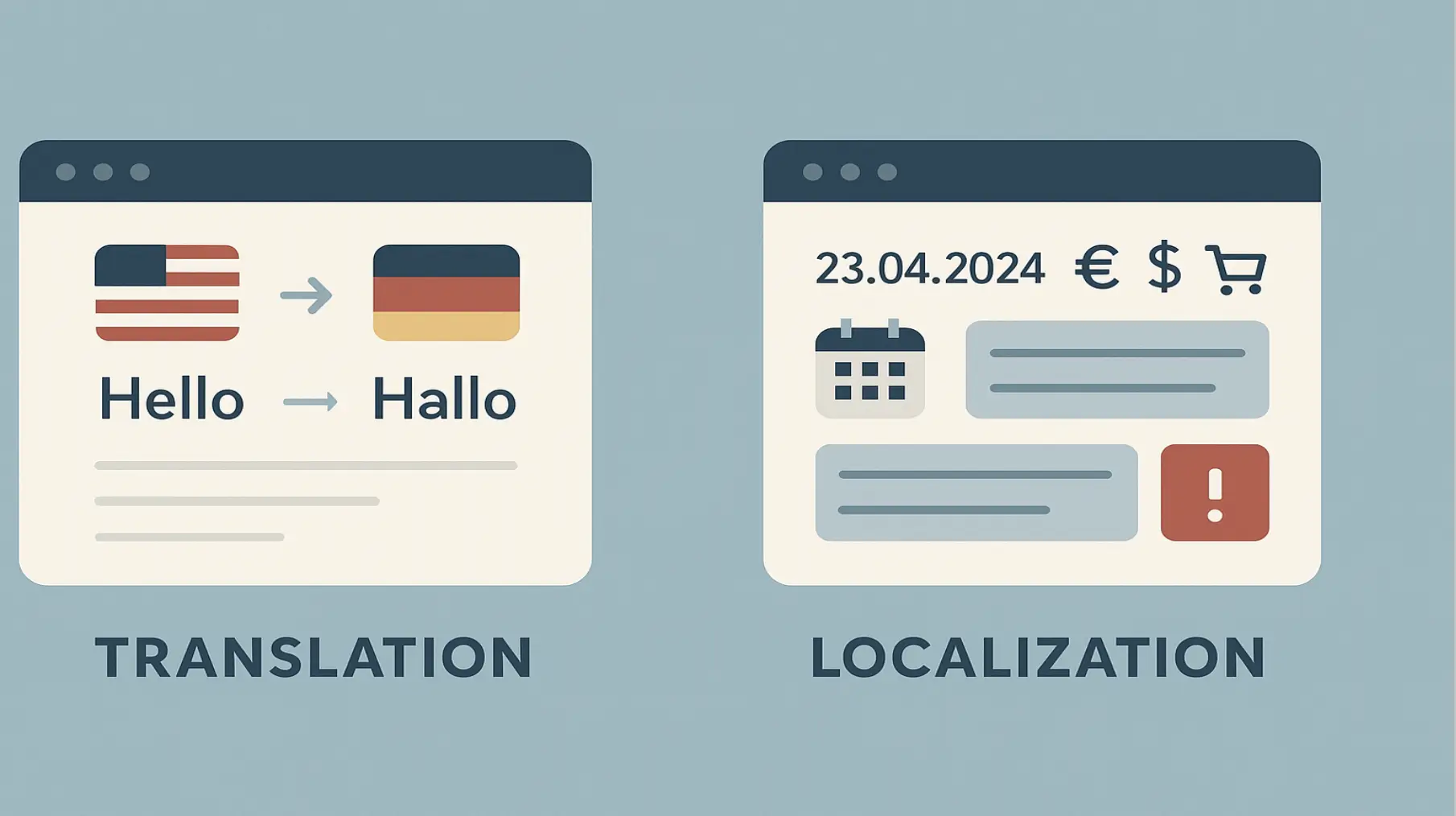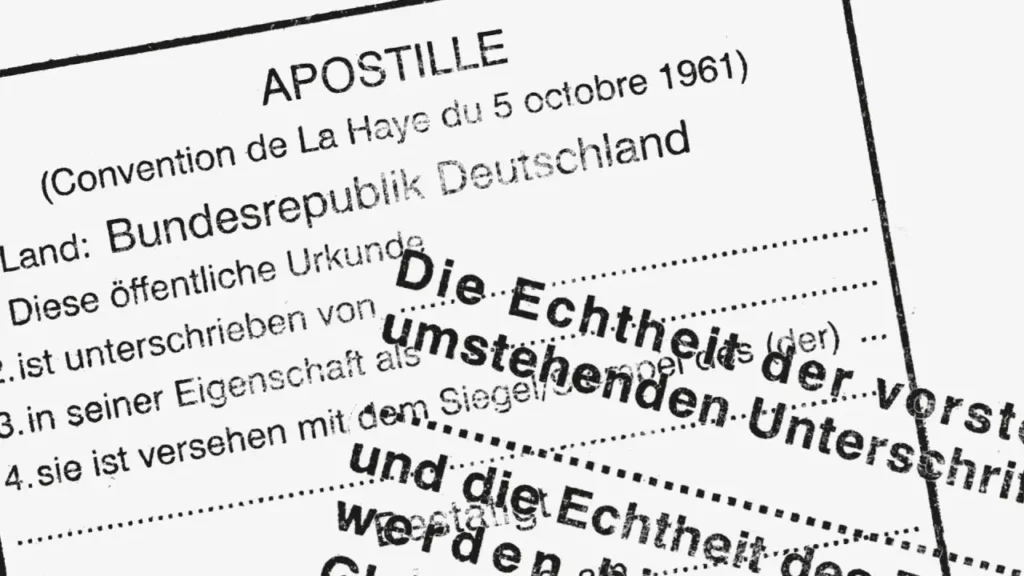Localization – crucial for your success with software and websites

Anyone who provides software or web content for international audiences faces a decision: Is translation sufficient, or is complete localization necessary? The answer depends less on the amount of text and more on the target audience, functionality and cultural context. While translation focuses on the linguistically correct transfer of content, localization goes far beyond this, taking into account culture, technology, user behavior and legal requirements.
The difference can be illustrated using a simple term such as “save”: In German software, “Speichern” is the appropriate equivalent. In France, however, the literal translation “Sauver” seems strange in the user interface, as it is more commonly associated with ‘rescue’ in everyday language. The correctly localized term here is “Enregistrer.” Such linguistic nuances have a decisive impact on user experience and show that pure translation is oftentimes not enough.
There are numerous other examples in practice: While a US user is familiar with the date format “12/31/2025,” a German user expects “31.12.2025” and a Japanese user expects “2025年12月31日.” If the format is not adapted, misunderstandings arise – especially with invoices, calendars,or appointments. Currencies must also be displayed in a context-appropriate manner: The amount “1.000,50 $” must be displayed as “$1,000.50” for US users, including the appropriate currency symbol and correct decimal separator. Even units of measurement play a role – for example, in shipping cost calculators or product dimensions: An online shop that only displays inches and pounds is unlikely to inspire confidence in most of Europe.
Challenging Layout
Technical challenges make localization more complex than simple translation. Many languages, such as German, Finnish and Russian, use significantly longer words than English. A button labeled “Submit” in English may be labeled ‘Absenden’ or “Formular übermitteln” in German, taking up more space. If the layout is not prepared for this, user guidance will suffer. The situation is even more critical with bidirectional languages such as Arabic or Hebrew, which require a completely mirrored UI – including navigation, icons, and text flow. Localization takes precisely these structural and typographical peculiarities into account, whereas pure translation often ignores the layout.
An equally important aspect is the cultural perception of symbols, colors and imagery. In Western culture, red usually stands for warning or error, whereas in China it symbolizes luck and prosperity. A red warning symbol on a Chinese user interface could therefore be unintentionally interpreted as positive. Emojis and hand gestures are not universal either: a thumbs-up is positive in the West, but can be offensive in the Middle East. Localization means recognizing such visual and semantic codes and designing them in a way that makes sense for each target culture.
Legal Hurdles and Data Protection
Beyond language and culture, legal requirements in the target country also play a central role. A website that complies with the General Data Protection Regulation (GDPR) in Germany must meet the requirements of the California Consumer Privacy Act (CCPA) for the Californian market. Different information requirements, withdrawal rights, or tax information cannot simply be translated, but must be adapted to be legally correct. This also applies to cookie notices, legal notices, terms and conditions, and shipping information. A technically accurate but legally incorrect translation can result in severe penalties.
Whether translation is sufficient or localization is required ultimately depends on the purpose and complexity of your digital product. A simple information page with static content may be sufficient with a good translation. However, for interactive applications, commercial websites, online shops, or software tailored to international users, localization is not just an added value, but a necessity. It ensures comprehensibility, trust, and user-friendliness – and is therefore crucial for success in global markets.
Professional language service providers such as ReSartus support this process with translations according to ISO specifications, the native speaker principle, technological expertise, and many years of experience in dealing with industry-specific requirements. They not only offer linguistic precision, but also ensure that your content reaches your customers wherever they are – in terms of content, functionality, and culture.
Do you need help localising your content? Contact ReSartus – we will be happy to advise you.

Push the Future

Small Businesses and Invoices

Vegan Language – It’s all about the Bratvurst

Accessible Texts – Leichte Sprache from a Translator’s Perspective

Between Deadlines and Diplomacy


Why localization is more than translation

60th Theodor Heuss Prize


The invisible danger: digital translation fraud

Planned revision of the JVEG

Freelancer visa in the UAE

Emigration to Dubai

Cuts and restrictions – Interpreters and Translators in Crisis

Building bridges at the Wilhelm Bock Prize

Funding Programs for Language Mediators in Healthcare

Inclusion in Education: ReSartus Enables International Exchange

The Future of Remote Interpreting – Virtual Conferences


Industry-specific challenges in the translation industry

The Role of AI in the Translation Industry

Hiiios – The video interpreting service by ReSartus

Emigrating from Germany

ReSartus supports the 43rd Erlangen Poetry Festival

Preparations for the COP 28 World Climate Conference

Push the Future

Small Businesses and Invoices

